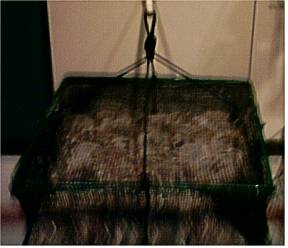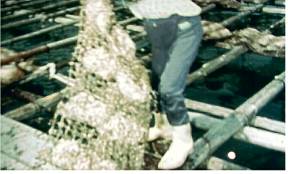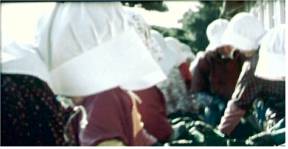|
Mikimoto Cultured Pearls MuseumCan't make it to the Mikimoto Cultured pearls museum at Toba, Japan? Then get a glimpse here.
I was shocked at comprehensiveness of the Mikimoto Cultured Pearls Museum. Parts are geared toward school children, but don't be fooled, any adult, even a pearl expert would learn and enjoy this delightful place. It's not a quick trip through, either, plan on spending some time here and really learn the facts, observe the operations and handle real pearls to learn about quality, sizing and shapes.
Some things on display are actual shells of pearl producers. The white lipped oyster was huge, but he black lipped oyster was gigantic. I never expected it to be so big. For perspective, nothing beats seeing these things in person.
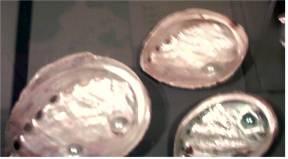
The movie of pearl oysters eating and growing reminded me of the lives that are lost so we can enjoy pearls. Pearl oysters start out very tiny. Here you see blister pearls on abalone shells.
A "piece" of this tissue is planted along with bead shell nucleus. The "piece" forms a pearl sac and then secretes nacre over the shell bead.
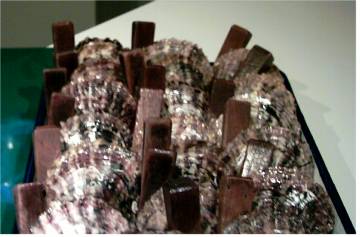
Pearl samples are in abundance with a particularly eye-catching 1.5 inch pearl for viewing. The hues and natural colors...pink tones, salmon, whites, blues, gold...are stunningly beautiful.
Some akoya shape examples include round, twin, semi-round, oval, baroque, tadpole and drop.
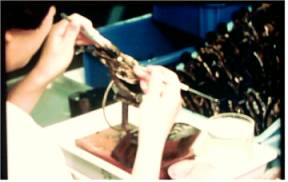
Here workers are implanting the shell bead nucleus and a "piece" of mantle tissue into an oyster. Some akoya shape examples include round, twin, semi-round, oval, baroque, tadpole and drop. Freshwater shapes to be viewed are more varied as rice, oval, drop, long drop, button, long stick, flat, butterfly, twin, triplet, dragon, cross, triangle, and odd shape.
You may watch a video of pearl drilling, and see actual drills at the Mikimoto Cultured Pearls Museum. Sorting methods are explained...sorting by size, color, shape, and quality. Lots of samples are shown so the guests can see for themselves the differences in quality.
Test you ability towards the exit of the Mikimoto Cultured Pearls Museum at determining which strand is a real strand of pearls and which is synthetic.
|



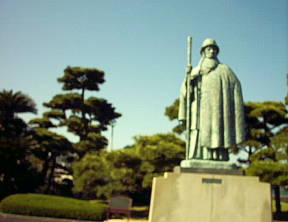
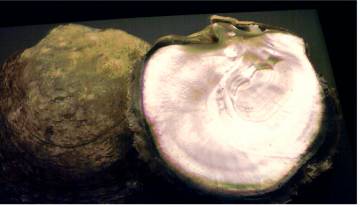
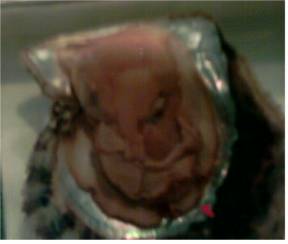 Here is a real preserved oyster with a red arrow (lower right hand corner) pointing to the mantle tissue which is necessary for pearl formation.
Here is a real preserved oyster with a red arrow (lower right hand corner) pointing to the mantle tissue which is necessary for pearl formation. 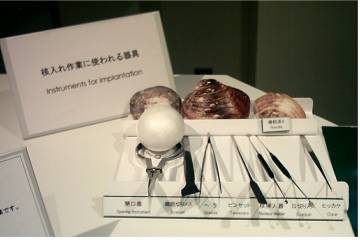
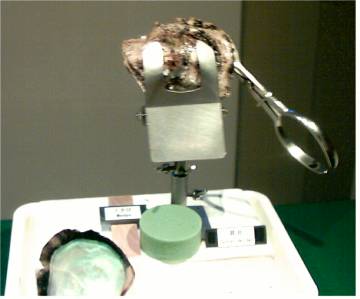
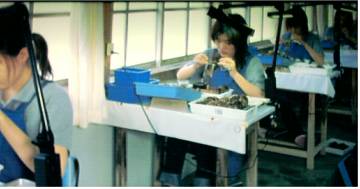 Pearl farming methods are touched on but pearl preparations for jewelry use is covered extensively.
Pearl farming methods are touched on but pearl preparations for jewelry use is covered extensively. 